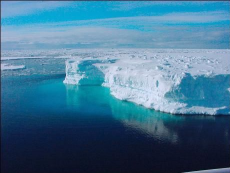

Lake Vostok
Lake Vostok Facts
Lake Vostok, at 3.5km long, is the biggest of over 300 sub glacial lakes in Antarctica.
It is located in the middle of the East Antarctic Ice Sheet - this is where the coldest ever temperature on earth was recorded on 21st July 1983 at -89oC.
Lake Vostok has been hidden under the ice for 25 million years.
The Vostok Station was set up by the Russians in 1956.
Lake Vostok has an area of 15,000km2 and depths of over 800m.
It is similar in size to Lake Ontario in Canada. The drilling project has taken years to plan and to begin drilling.
The Vostok project is one of three drillings in Antarctica. The British team is beginning to drill into Lake Ellsworth (West Antarctica) and The US team wants to drill into Lake Whillans (West Antarctica)
At 5:25 pm the Russian team at Lake Vostok confirmed that they have broken through the 3766m of ice covering Lake Vostok. According to Russia’s Arctic and Antarctic Research Institute (AARI) this is the first time that a subglacial lake in Antarctica has ever been drilled to. Drilling Vostok has taken more than a decade of planning, Valery Lukin who has been overseeing the project says: ‘This fills my heart with joy.’
Drilling stopped on the 5th February and most of the scientists have left the station because they can only do research during the Antarctic summer (November-February). Only two scientists have stayed at the station over the winter, this is so that they can monitor the borehole (the hole made by the drill) in case something goes wrong.
The scientists are drilling into Lake Vostok because they hope to find information about Antarctica’s history and they are also hoping to find organisms unknown to science.
Due to the Antarctic winter, the scientists have to wait until they can return to discover its secrets, because the winters on the East Antarctic Ice Sheet are very cold and bad. A frozen sample will be taken from the lake in December during the next Arctic summer, but for the moment the scientists have raised a sample of only 40 litres. One of the scientists on the team said that it was ‘like exploring another planet except this one is ours.’
Many researchers are interested in Lake Vostok because it will give them new information about the frozen history of Antarctica. It also opens the doors for subglacial science; this includes studying how life might have evolved in an extreme environment such as this.
Astrobiologists (people who study the possibility of life in the universe) are extremely interested in subglacial environments because it will help them to work out the likely spread of life throughout the universe. Lake Vostok will aid this because the conditions might not be that different from the conditions in the liquid water lakes which are thought to exist under the surfaces of moons such as Europa (Jupiter) and Enceladus (Saturn).
Many people are wondering if there will be ‘alien’ life in this lake, because the lake has had no contact with the surface or other life forms for 25 million years. Evidence has been found that microbes could live in the conditions in the lake by producing energy from minerals through eating rocks. The team has sampled pieces of ice which has naturally frozen onto the ice ceiling. Some researchers claim it contains bacteria but others say it is just contamination.
Some scientists say that because the ice is loaded with bubbles of trapped air, the oxygen concentrations will be so high that they are toxic therefore making the lake completely uninhabited.
If Lake Vostok turns out to have no life whatsoever it will be the only place on Earth where there is water and yet there is no life.
A few of the lakes are connected and will exchange water, others are cut off completely. If Lake Vostok is cut off completely, then the water in it has been in the same place for millions of years making it quite likely for microorganisms unknown to science to have evolved in it.
image-https://www.atlasobscura.com/places/lake-vostok

0 Comment:
Be the first one to comment on this article.